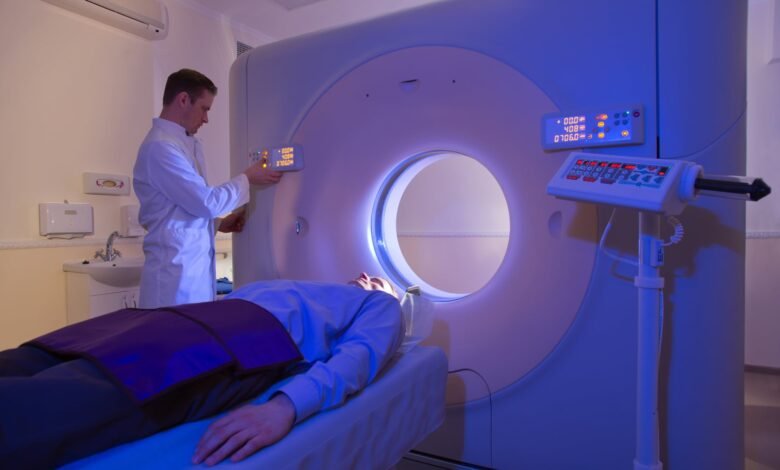Diag Image: Tips from Radiology Experts

Diagnostic imaging is a cornerstone of modern medicine, serving as the window through which healthcare professionals gain insight into the inner workings of the human body. From X-rays revealing broken bones to MRIs uncovering intricate details of soft tissues, imaging technologies play a crucial role in guiding diagnosis and treatment. The field of diag image—short for diagnostic imaging—is vast, complex, and continuously evolving. At the center of it all are radiology experts, whose skill ensures that every image tells an accurate story. Let’s explore how this essential field operates and gather expert insights from those who make it possible.
The Importance of Accurate and Quality Images
Accurate and high-quality images form the backbone of effective diagnostic imaging. Each image provides critical data that can directly impact patient outcomes. Even the smallest detail—a shadow, a texture, or a slight variation in density—can signal an underlying condition.
Clear and precise visuals allow radiologists to detect abnormalities early, leading to faster diagnosis and treatment. On the other hand, poor-quality images increase the risk of misinterpretation, unnecessary procedures, and patient anxiety.
Investing in advanced imaging technology enhances both precision and reliability. Modern equipment captures intricate details that older machines may miss, reducing errors and improving diagnostic confidence. In radiology, every pixel matters—accuracy saves time, reduces risks, and improves patient care.
Common Types of Diagnostic Imaging Techniques
Diagnostic imaging encompasses several methods, each tailored to specific medical needs:
-
X-rays – The most commonly used imaging technique, ideal for detecting fractures, infections, and chest conditions.
-
Ultrasound – Uses high-frequency sound waves to visualize internal organs. It’s essential in obstetrics, cardiology, and abdominal imaging.
-
CT Scans (Computed Tomography) – Combines multiple X-ray images to produce detailed cross-sectional views of the body, ideal for detecting tumors, internal bleeding, and complex fractures.
-
MRI (Magnetic Resonance Imaging) – Employs magnetic fields and radio waves to create high-resolution images of soft tissues, crucial for assessing the brain, spine, and joints.
-
Nuclear Medicine – Involves small doses of radioactive material to evaluate physiological functions, such as metabolism or blood flow.
Understanding these techniques enables healthcare providers to select the most appropriate imaging method for each patient’s condition.
Tips for Proper Patient Preparation
Patient preparation is key to successful diagnostic imaging. Radiology experts emphasize the importance of communication and cooperation.
Patients should be advised to wear comfortable, metal-free clothing to avoid interference with imaging equipment. For certain scans like CTs or MRIs, fasting or avoiding specific medications may be necessary—clear instructions prevent complications and delays.
Patients must also remain still during imaging. Even minor movements can blur images, leading to repeat scans and inaccurate results. Reviewing medical history beforehand is equally essential, as it helps tailor the procedure to individual needs, particularly for those with allergies, implants, or prior surgeries.
Ultimately, patient awareness and cooperation lead to clearer images and more accurate diagnoses.
Best Practices for Image Acquisition and Interpretation
High-quality image acquisition requires a combination of technical precision and professional expertise.
Technicians must ensure proper calibration of imaging devices and adhere strictly to protocols. Correct patient positioning is also crucial—it minimizes the need for repeat scans and reduces unnecessary radiation exposure.
During interpretation, radiologists should follow a systematic review process, comparing current images with previous studies and integrating clinical history. Collaboration among radiologists, physicians, and specialists enhances diagnostic accuracy, as shared insights often lead to more complete conclusions.
Incorporating advanced software and AI tools can further improve image clarity and pattern recognition, helping professionals detect subtle changes that might otherwise go unnoticed.
Utilizing Advanced Technology and Innovations in Diagnostics
The future of diagnostic imaging lies in innovation.
Artificial Intelligence (AI) is revolutionizing radiology by automating image analysis and identifying anomalies with remarkable accuracy. AI systems can prioritize urgent cases, detect early disease signs, and reduce human error.
3D imaging and augmented visualization techniques now provide detailed anatomical views, empowering surgeons and physicians to plan complex procedures with precision.
Tele-radiology has also transformed accessibility—radiologists can interpret scans remotely, offering expertise to clinics and hospitals in underserved regions. This global collaboration ensures timely diagnoses and consistent quality of care.
These innovations not only enhance diagnostic accuracy but also contribute to more personalized, efficient, and patient-centered healthcare.
Challenges and Solutions in Radiology
While diagnostic imaging continues to advance, the field faces several challenges. The growing volume of imaging studies increases workloads for radiologists, who must maintain both speed and precision.
Rapid technological evolution demands constant learning and adaptation. Professionals must stay updated through continuing education to keep pace with new modalities and AI-integrated systems.
Variability in image quality and interpretation also presents risks. Establishing rigorous quality control measures and promoting interdepartmental collaboration can reduce errors.
AI-assisted diagnostics offer promising solutions by handling repetitive tasks and enhancing image interpretation accuracy, allowing radiologists to focus on complex cases requiring expert judgment.
Conclusion: The Vital Role of Radiology Experts in Healthcare
Radiology experts are the unsung heroes of modern medicine. Their meticulous analysis and technical expertise form the foundation for accurate diagnosis, effective treatment, and better patient outcomes.
By combining advanced imaging techniques with emerging technologies like AI and 3D modeling, radiologists are shaping the future of healthcare. Their collaborative approach ensures that every image tells a precise, meaningful story—one that guides physicians toward the best possible decisions for their patients.
In essence, the field of diagnostic imaging is not just about machines and scans; it’s about the professionals who interpret them with care, precision, and a commitment to improving lives through the power of visualization and science.




